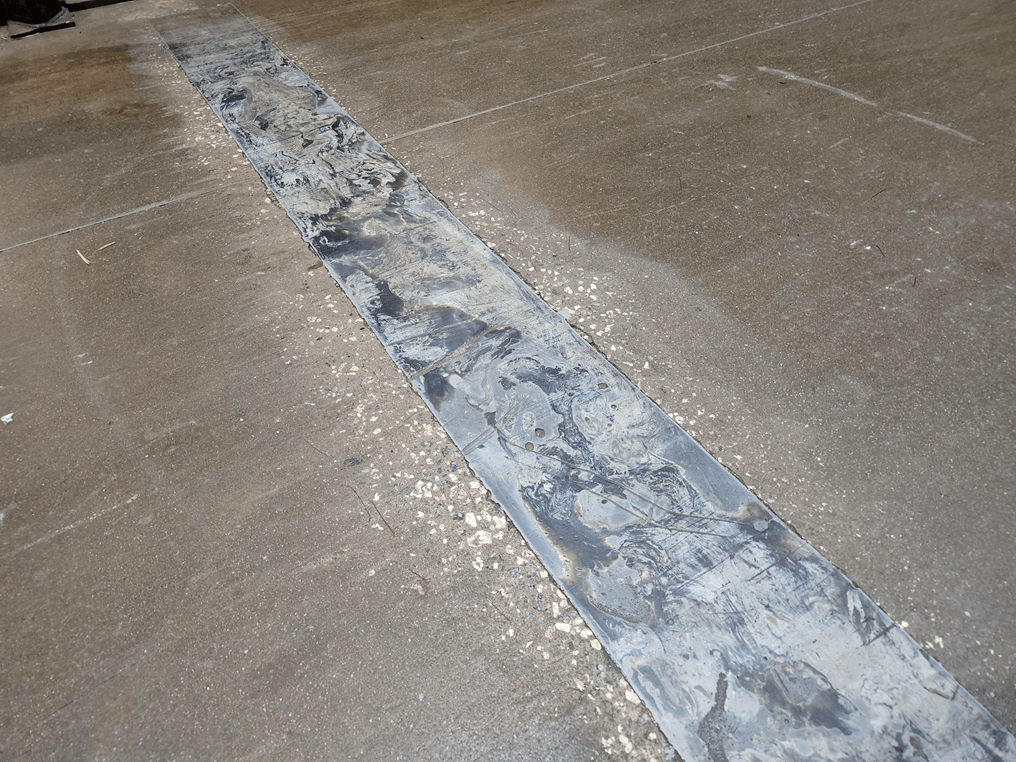Uneven slabs or worn control joints make for a bumpy forklift ride and add regular wear and tear on your equipment. We've seen this cost thousands of dollars to companies each month by decreases the life of your forklift wheels and increases general overall damage and regular maintenance needed.

Get What You Pay For
Repairing your floors can be the investment you need in reducing damage to your forklift, but not all repair options are equal. The above photo shows a control joint repaired with epoxy. Notice the light between the trowel and the control joint. This dip is common with epoxy repairs and does not give the smooth ride you are paying for or that your forklift needs.

The Difference
Flash Floor is different than epoxy in many ways, but one of it's best attributes is what we call "grade matching". Grade matching is where we can bridge 2 uneven surfaces into a smooth transition. This can be done even when the two surfaces are uneven by inches. This is where we can grade match by ramping. Epoxy always calls for a minimal depth needed while Flash Floor has no minimum depth requirement and can feathered down to thinner than a grain of sand.
In the animated photo below you can see a control joint has been cut out and repaired with an epoxy. The highlighted area shows how there is still a dip in the floor between slabs and this is confirmed by the wear pattern and the exposed aggregate. This dip will still cause damage to forklift wheels. Also, notice how much concrete needs to be cut out with an epoxy repair. This essentially creates 2 new control joints that will need repairs in the future.

In the photo below is a similar repair made with Flash Floor. Notice that the control joint has an even transition between slabs and no dip or hump is created. Also, Flash Floor requires no saw cutting and the control joint is not made wider.

Want to know more about the difference between Flash Floor and epoxy, read more here:

Comments